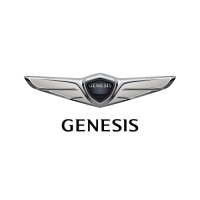22
/
Wheels
Checking the wheels
The bicycle is connected to the ground by the
wheels. The wheels are subject to a great deal of
strain through the uneven characteristics of the
ground and the weight of the rider.
Thorough checks and centring work on the
wheels is undertaken before they are shipped.
However, during the rst few kilometres of riding,
the spokes bed in.
• After the rst 100 kilometres, the wheels have
to be checked by a specialist and centred
again if required.
• The tension of the spokes has to be checked
at regular intervals. Loose or damaged spokes
have to be replaced or centred by a specialist
retailer.
The wheels can be xed in the frame and fork in
different ways. Commonly, the wheel is attached
with an axle nut or a quick release. In addition,
there are also various thru axle connections
which are screwed in or xed with various quick
release systems. When a quick-release axle is
tted on your bicycle, you can nd more infor-
mation in the enclosed manufacturer’s operat-
ing manual or on the respective manufacturer’s
website.
All screw connections must always
be fastened with the correct torque. If
the torque is not correct, the screws
could break or loosen other parts (see page
34 “Torques for bolted connections”).
Checking the hubs
You can check the hub bearings as follows:
• Lift the wheels up from the ground by rst lift-
ing the bicycle at the front then at the rear.
Push each wheel to start them turning.
• The wheel should continue to turn and then
slow evenly. If the wheel suddenly stops, the
bearing is defective. One exception is front
wheels with a hub dynamo. They have a
slightly higher resistance to rolling. However,
this can hardly be noticed during normal riding.
• The hub bearing should not exhibit play. Pull
the wheels in the front and rear fork lightly to
the sides to check if they are loose. No play
may be noticeable.
• If the wheels can be slightly moved in their
bearings or are difcult to turn, the hub bear-
ings have to be set up by a specialist retailer.
Rims/tyres
Regularly clean the rims according to the inspec-
tion plan, page 31. Check the wear markers dur-
ing that process:
Modern rims (from 24") indicate when
they are worn from braking. These in-
dicators take the form of embossed
or coloured points or lines on the brake sur-
faces of the rims. When these disappear, you
are no longer permitted to use the rims. There
are also similar indicators which only appear
after a certain level of wear. At the very latest
when two pairs of brake rubbers have been
worn, it is necessary to have the rims check
by a specialist retailer.
Groove as wear
marking
In particular, rims made of compos-
ite materials, such as carbon bre,
require special attention. Friction
caused by the rim brakes, but also by simply
riding the bike, puts a substantial amount of
strain on the bike.
• Only use brake pads that are designed for
use on the rims’ material.
• Each time before riding the bike, check for
wear, tear, defects, cracks and chipping on
the rims and wheels when they are made of
composite materials!
• If you nd any changes, do not ride the
bike with this part until a specialist retailer
or manufacturer has checked the part and
deemed it to be fully functional.
When replacing the original tires or
the cranks, make sure that there is
enough free space between the tires
and the shoe. Accidents and severe falls
could otherwise occur.

